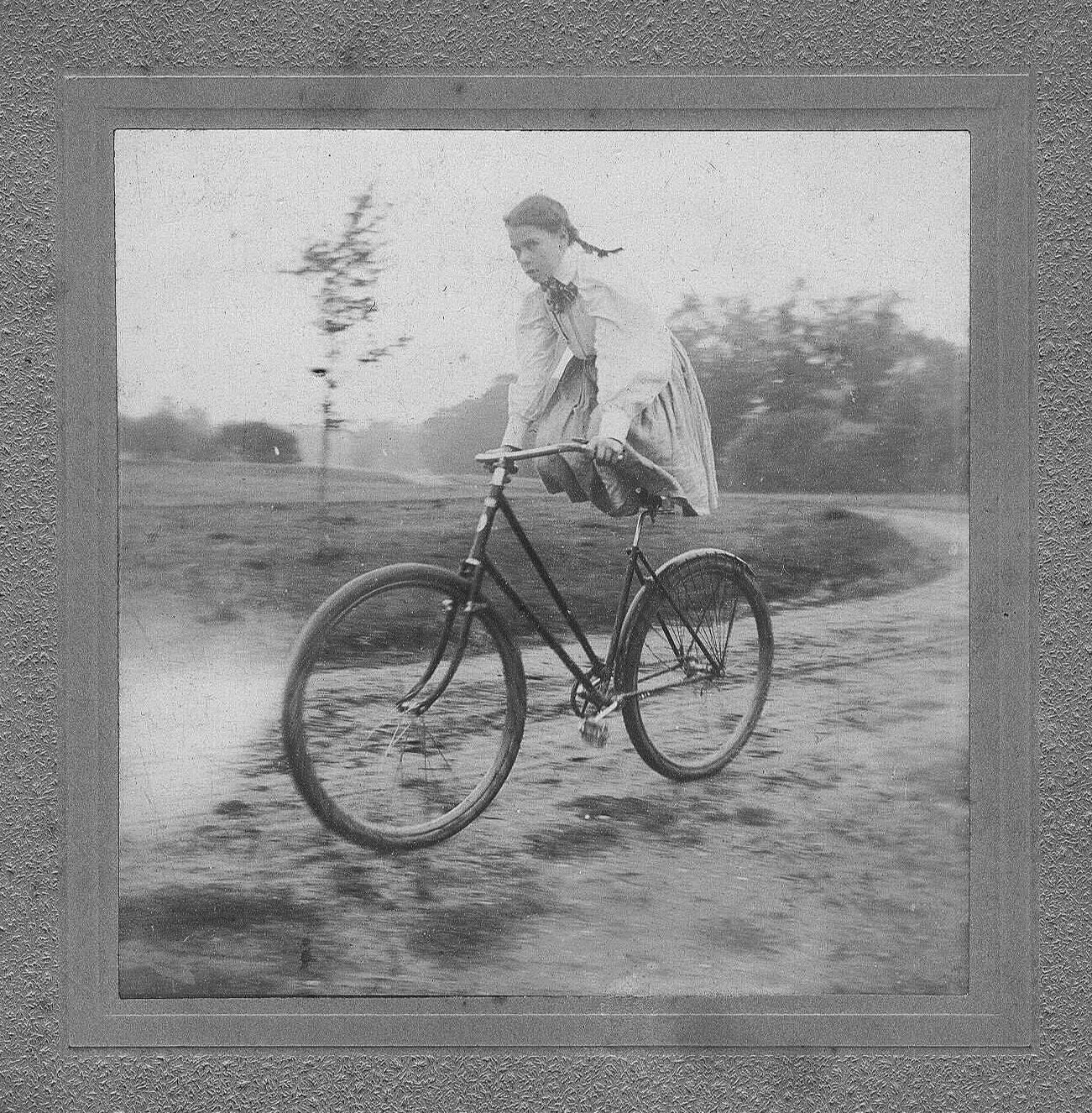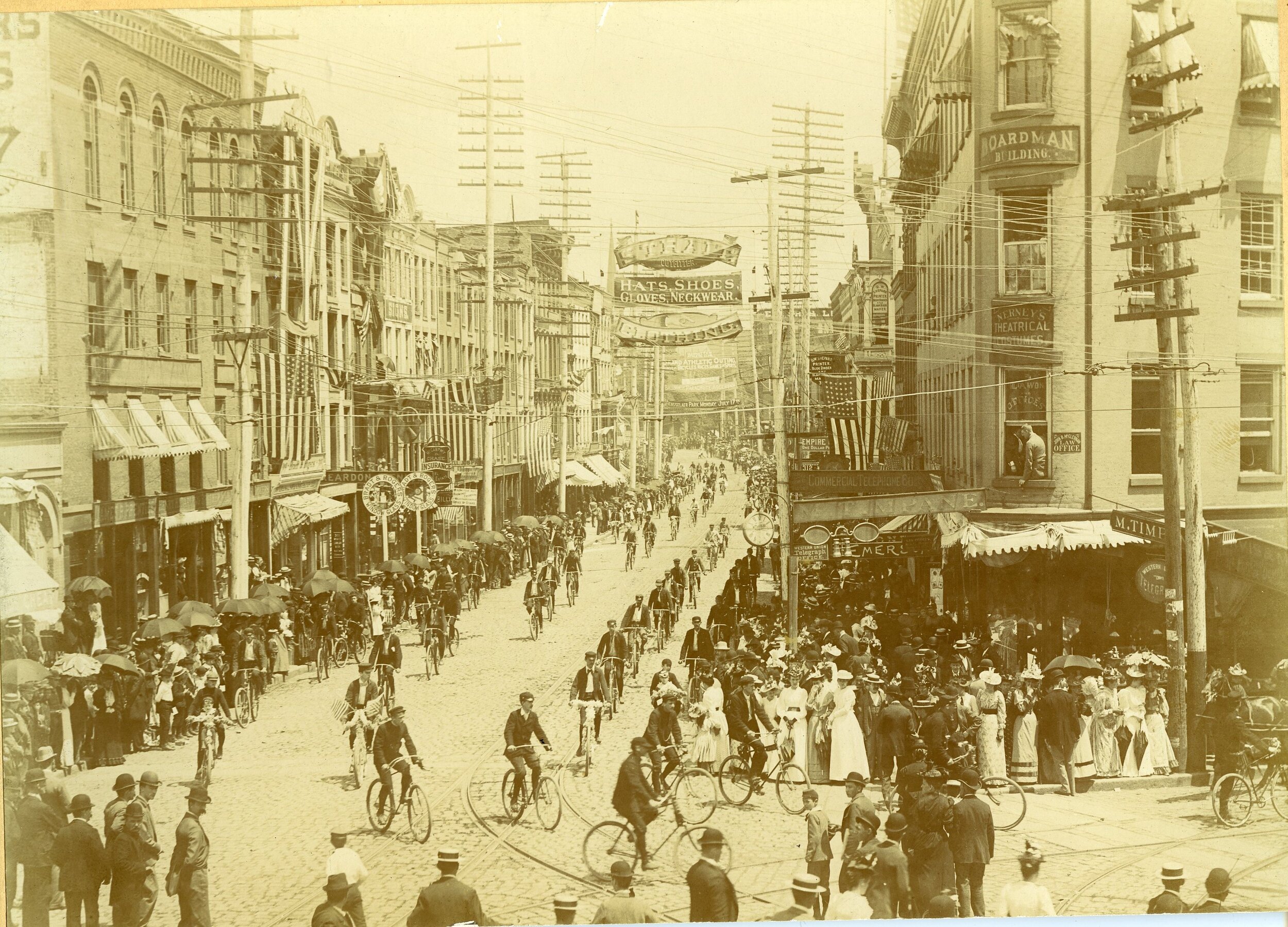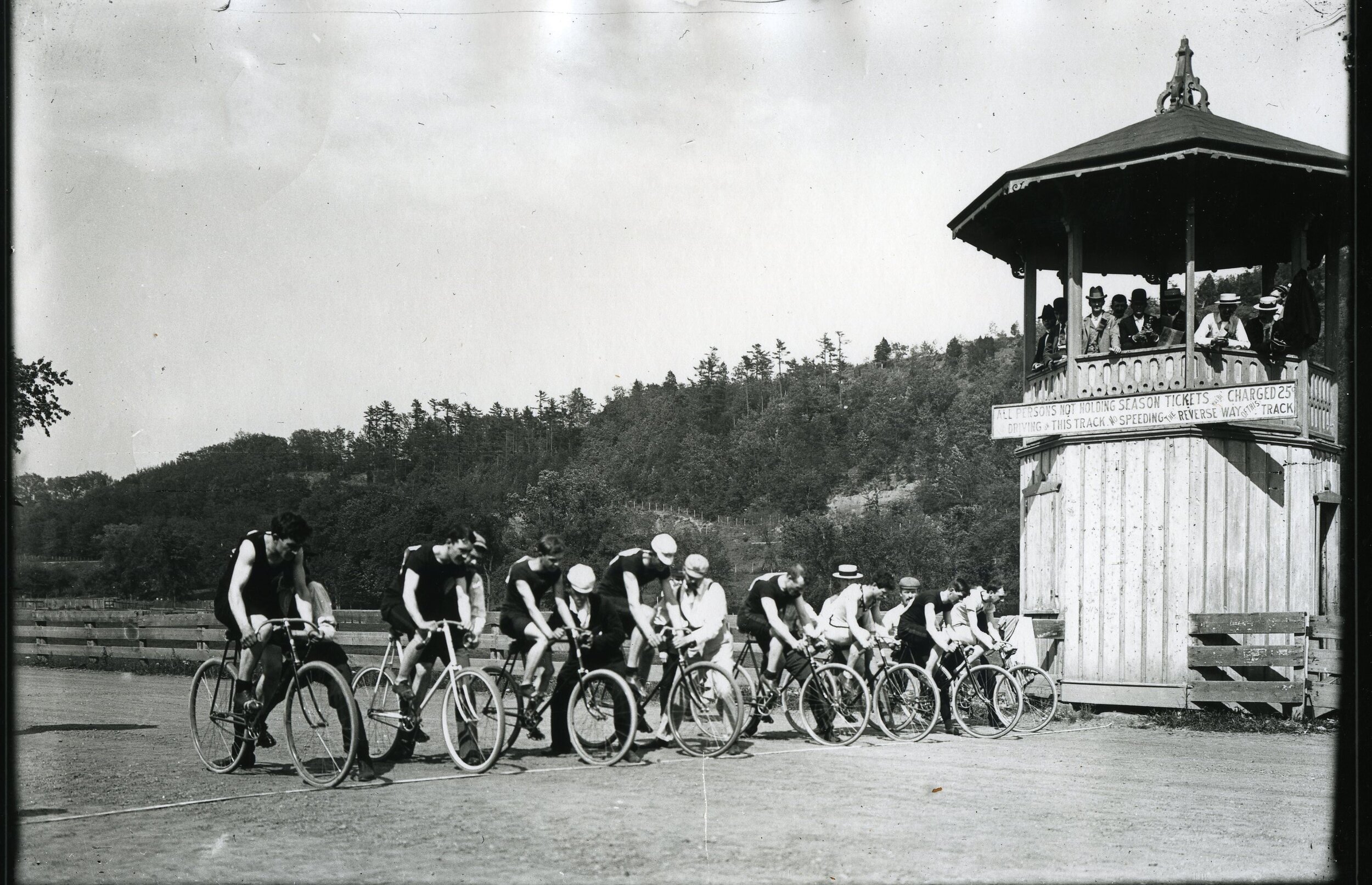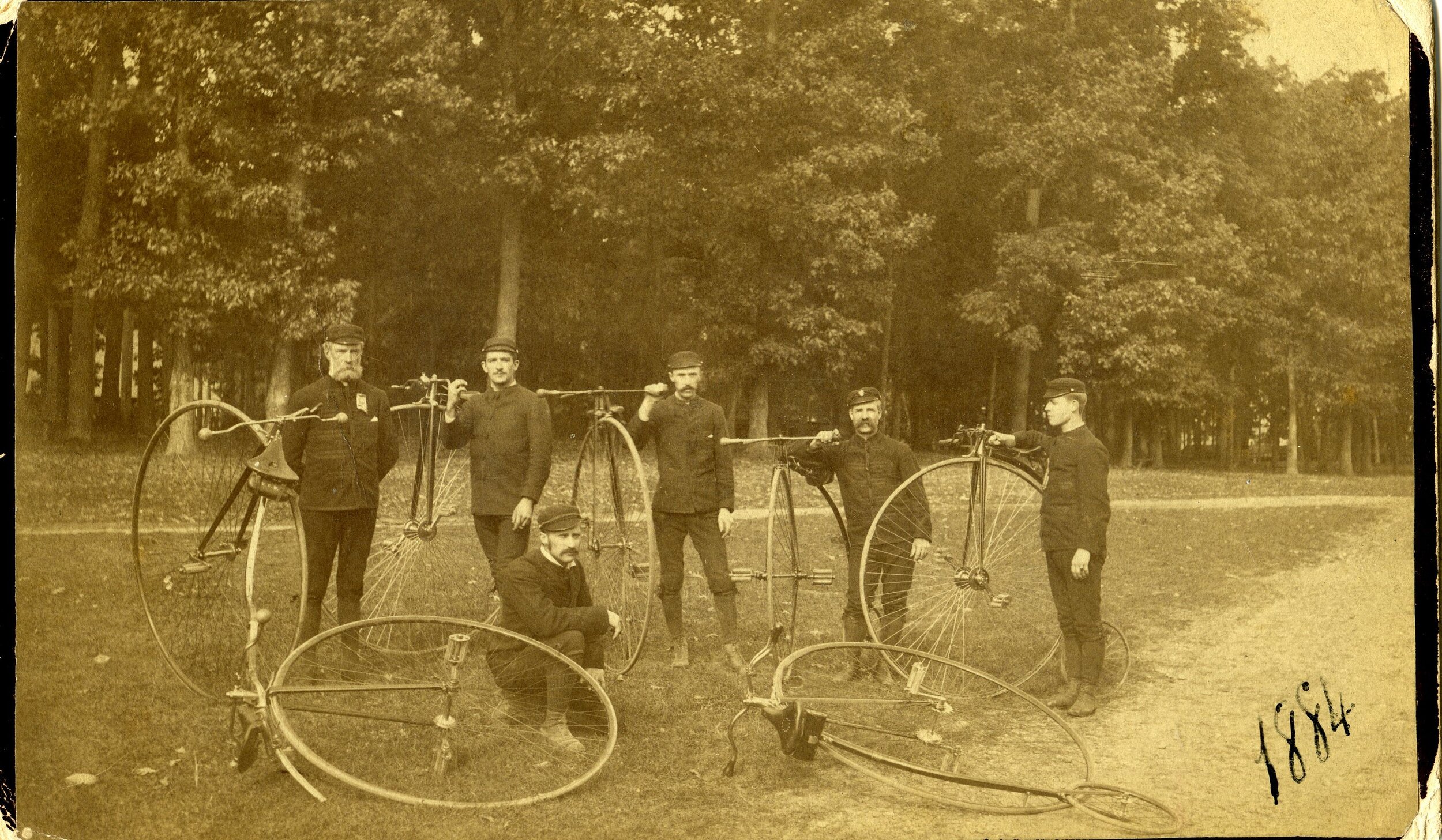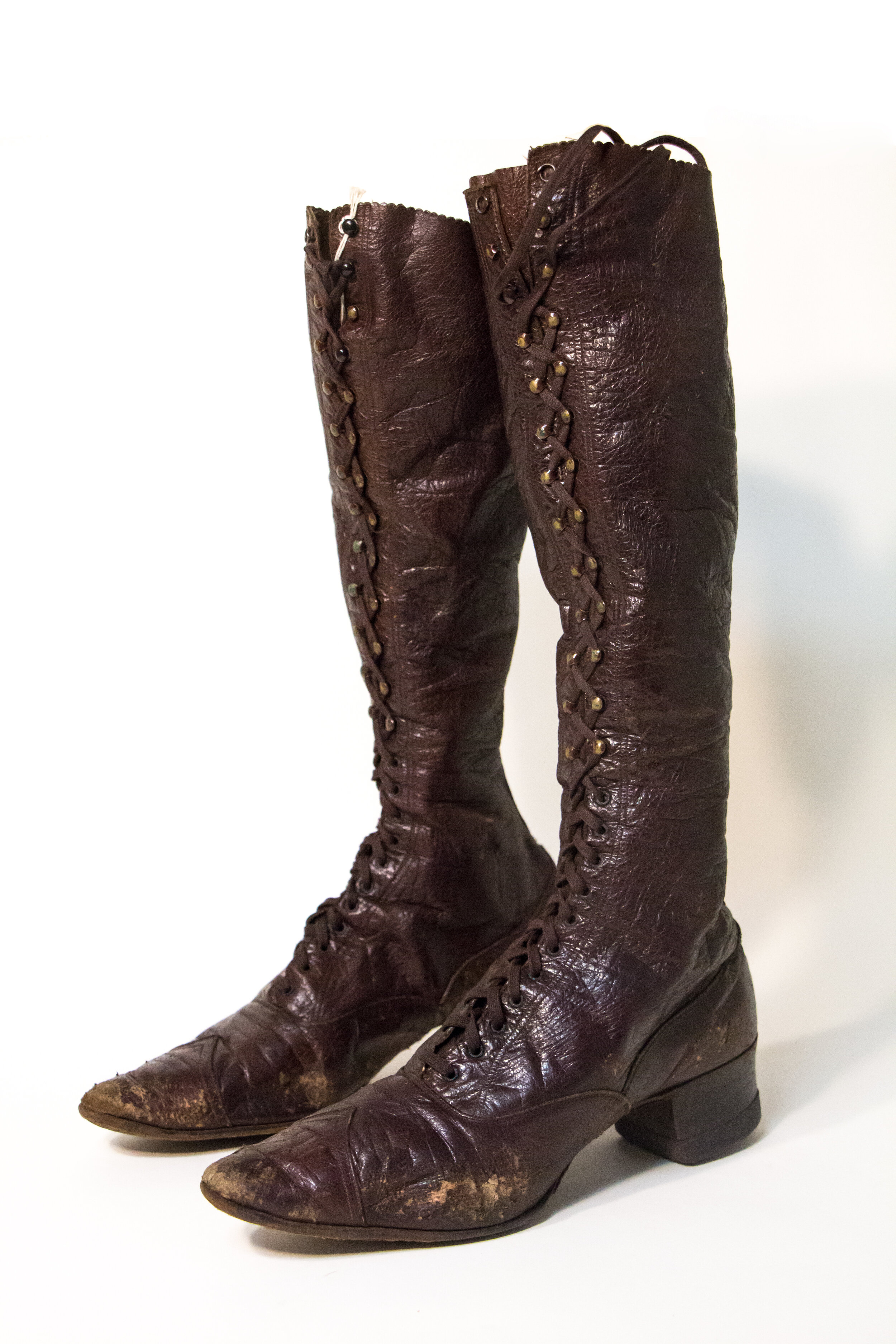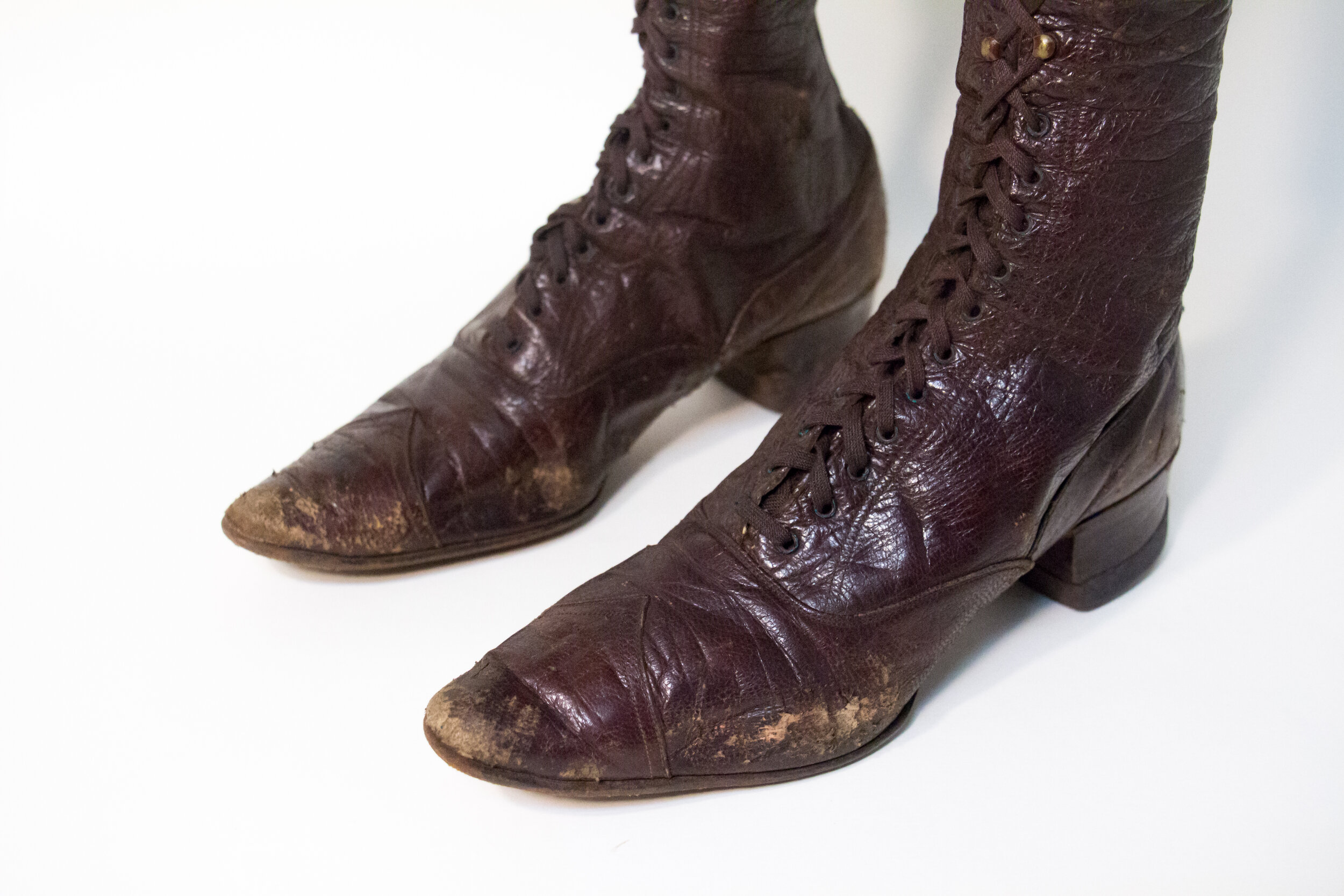The Cycling Craze
Bicycles were first constructed in the early 19th century, though certainly not in the contemporary bicycle form we recognize today. The earliest version of the bicycle was a steerable, two-wheeled contraption created in 1817 by a German baron named Karl von Drais. This clunky wooden prototype didn’t include a chain, brakes or pedals. Instead, riders propelled the 50-pound frame forward by pushing off from the ground with their feet, warranting its nicknames of “velocipede,” “hobby-horse,” “draisine,” and “running machine.”
By the 1860s, the aforementioned had evolved into a prototype that had pedals attached to the front wheel and over time, new models would sport an oversized front wheel in the hopes of better stability during riding - becoming all the rage by the 1870s and 80s. Dubbed “penny-farthings” or “ordinaries,” these oddly shaped machines helped give rise to the first bicycle clubs and competitive races.
However, the four-foot-high saddle of these ordinaries made them too dangerous for most to ride. In 1885, Englishman John Kemp Starley introduced a new “safety bicycle” design that featured equal-sized wheels and a chain drive. New developments in brakes and tires followed shortly, establishing a basic template for what would become known as the modern bicycle.
By the 1890s, cycling had taken the United States and Europe by storm.
Yet at this time, cycling was not viewed as an activity suited for women. An 1897 Los Angeles Herald article entitled Riding for Ladies stated, “In the beginning of cycling it was impossible for women to ride the high wheel without sacrificing their dignity and reputation.” But by the turn of the century, women cyclists were becoming the norm. In fact, newspaper accounts throughout the 1890s detailing the rise of cycling’s popularity couldn’t help but note the rising interest amongst women in the sport. The Albany Morning Express is such an example, publishing an announcement in 1895 regarding the creation of a Woman’s Cycling Club in Albany, NY, where “men [were] admitted to the organization, but only as honorary members.”
Check out these ladies brown leather bicycle boots that are a part of the Hart Cluett Museum permanent collection.
As a pair of women’s shoes, they offer much insight into the evolution of women in cycling but, furthermore, allow deeper inspection of the continuous battle for equality between the sexes. By spotlighting these boots, we are also able to discuss the increasing mobility of women in the later 19th century. Out of their domestic spheres and into the streets, bicycles offered women a new avenue for freedom.
Here’s what Charlotte L. Bolton, noted as “one of the first prominent women to adopt the wheel instead of the carriages & the first lady member of the League of American Wheelmen” had to say upon being asked why women should ride:
“I can sincerely say that cycling is a recreation peculiarly adapted to women and of especial benefit to those of a more sedentary life. Women riders have taken up cycling with great zest and to this interest much of the phenomenal growth of cycling is due.
That use of the wheel is making women more courageous, more self-reliant, stronger and healthier is illustrated every day. I do not approve of hard, long-distance riding but preach moderation/ Whatever prejudice may have existed against bicycling for women is rapidly disappearing as the subject becomes better understood.
The leading women of the country and also abroad, are adopting the wheel as the most satisfactory means of gaining health and pleasure. If women thoroughly understood what cycling really is doing for their sec they would no longer apathetic or indifferent on the subject.
From a practical knowledge of cycling, I am prepared to get the maximum of health and pleasure from the wheel, and I have found that a lady can dress and care for herself as gracefully on a wheel as in a drawing room. To all women who have not already take to the bicycle I say, delay not another moment, for you cannot imagine how much of life’s joys you are missing.” - Los Angeles Herald, September 12, 1897.
Our research regarding women cyclists here in Troy and across the county is still ongoing. Whether or not there was a Women’s Bicycling Club on this side of the river as there was in Albany is still unknown. However, in using newspaper advertisements and city directories, it is apparent that women cyclists existed, huzzah! Here’s a newspaper advertisement by Mitchell L. Dunham, who is listed in the Troy City Directory in 1896 as selling bicycles at 335 River Street. Note that the Christy Anatomical Saddle is “specially adapted for women cyclists and long distance riding.”
There are other newspaper accounts detailing stories of women cyclists, including collisions and pointing out that “wheelwoman have for a long time been in the habit of riding faster than the law permits.” (Troy Daily Times, 1896).
Evidence of Troy and Rensselaer County women enjoying cycling is present, but more research is necessary to provide an accurate portrayal of women cyclists within the county.
Cycling at the Hart Cluett Museum
Did you know that cycling was just as common across Rensselaer County as it was nationally and abroad? Troy was actually home to a few bicycle clubs, including the Trojan Wheelman Club. Their by-laws state, “the object of this association shall be to promote social intercourse among its members and to provide them with Club Rooms.”
Here are some images from HCM’s permanent collection highlighting the cyclists of Troy and Rensselaer County.
